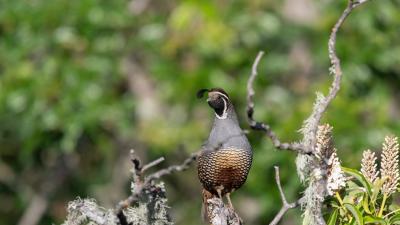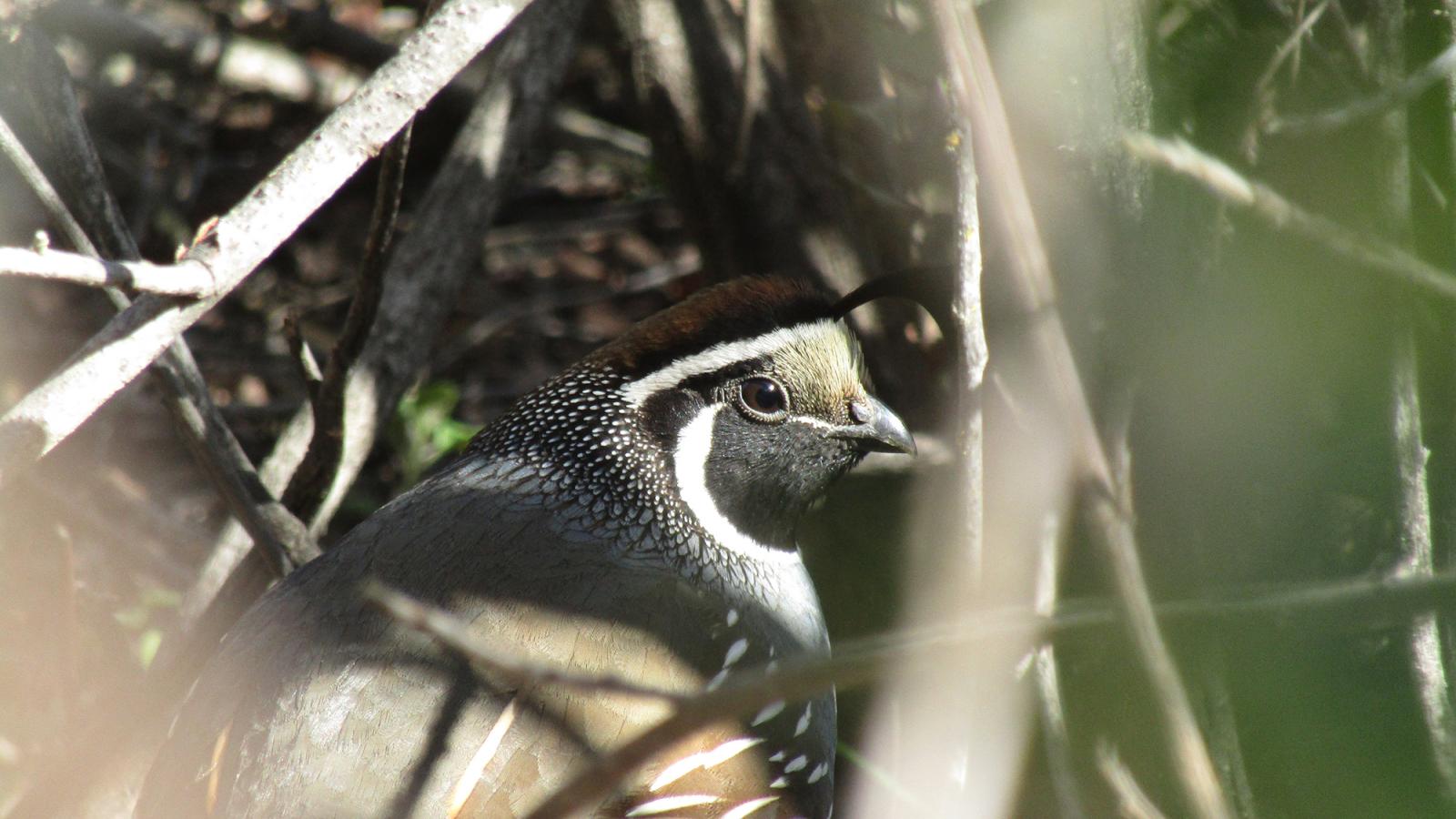The California quail (Callipepla californica), also known as California valley quail or valley quail, is California’s state bird. They are a small, ground dwelling bird that can often be seen bobbing their heads as they strut across clearings. Having adapted well to human populations, California quail are widespread within their range and not considered threatened.
The California quail is a highly sociable bird that often gathers in small flocks known as “coveys”, which can consist of 20 to 100 birds. They take dust baths together in soft sunny dirt to keep clean and prevent parasites. If startled, the covey explodes into low short rapid flight, called flushing, but if they are able, they prefer to escape on foot.

Their habitat includes broken chaparral, woodland edges, coastal scrub, parks, farms, and even semi-desert situations. They avoid mountainous areas and are most common in open oak woodlands and streamside growth bordered by chaparral.
California quail forage on the ground, often scratching at the soil, and can sometimes be seen feeding at the sides of roads. Their diet is typically about 70% vegetarian, mostly consisting of seeds and leaves. They also eat flowers, catkins, grain, manzanita, toyon and poison oak berries, acorns, and invertebrates such as caterpillars, beetles, mites, millipedes, and snails.
They lay their nest in a shallow depression lined with vegetation on the ground amid grasses beneath a shrub or other cover. Nests are often placed near vegetation or rocks for protection and occasionally nests can be found up to 10 feet off the ground.

Female quail incubate the eggs 18-23 days and once they are hatched, the young associate with both parents. Often, families group together into multifamily “communal broods” which include as least two females, multiple males, and many offspring. California quail are serially monogamous; this means that their pair bonds last only during one breeding season. In good years, females will lay more than one clutch, leaving the hatched young with the associated male and laying a new clutch, often with a different associated male.
California Quail Fast Facts:
- They have a distinctive curving crest or plume, that droops forward.
- One female usually lays 10-16 eggs, usually 13-14.
- Eggs are 1.3 in long and 1.0in wide, and are white to creamy with variable brown markings
- Each covey usually posts a lookout to watch for predators, usually an adult male
- Both sexes have similar plumage patterning. Female California quail are more drab and brownish-grey overall while males have more striking black and white markings and contrasting color
- They have white stripes on gray and brown sides, with a scaled pattern on the belly

